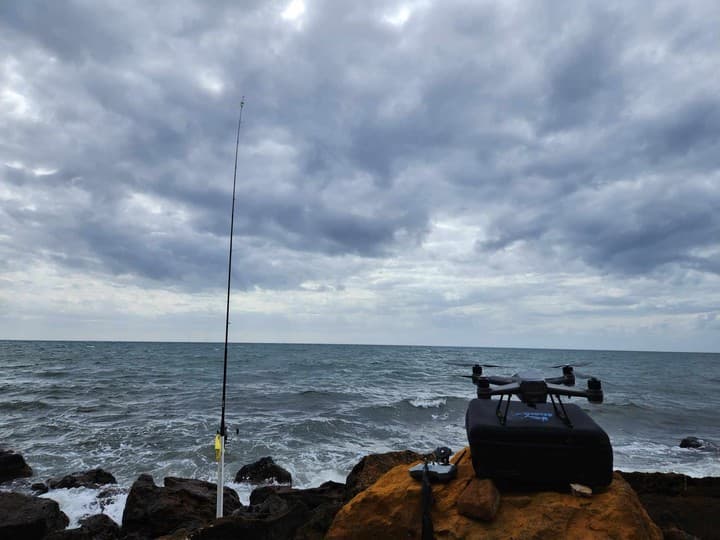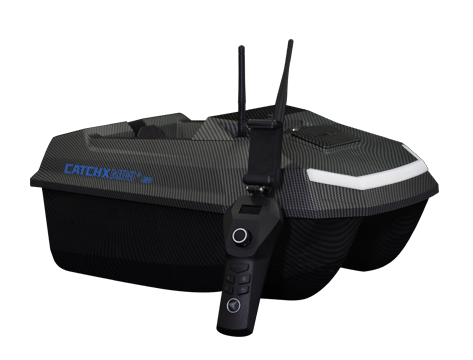Top 10 Possible Problems When Using Fishing Drones
Fishing drones calibrations not done, or not done correctly
One of the primary reasons for issues during fishing drone flights is the neglect of proper calibrations. Failure to perform or incorrectly execute calibrations can lead to unpredictable behavior. Manufacturers provide detailed instructions in product manuals and videos. It's imperative to follow these guidelines before each flight, as they lay the foundation for a trouble-free drone experience.
Fishing drones battery issues
Before taking your fishing drone to the skies, ensure both the drone and remote batteries are fully charged. Maintaining your battery in good condition is equally crucial. Avoid pushing your battery to its limits during flights, and switch to a fresh battery if it's running low. Proper lithium battery care, including storage at 50-60% charge, is essential to prevent usability and safety issues.
Pre-flight practice: navigating safety of fishing drones
Skipping pre-flight practice in a controlled environment is a recipe for disaster. New drone pilots, especially in the realm of fishing drones, should conduct at least five test flights in an open space devoid of people or animals. This preparation is vital before attempting flights over water. Practicing drone control ensures a smoother experience during actual fishing trips.

NOT reading the Manual of fishing drones
Despite the user-friendly nature of modern fishing drones, overlooking the product manual is a common mistake. Each drone operates differently, and familiarity with the manual's instructions and manufacturer-provided videos is essential. Even experienced drone operators should take the time to understand the nuances of their specific model to avoid complications.
Overconfidence Pitfall: Navigating with Caution
Overconfidence, especially among new drone pilots, can lead to significant problems. Issues like misorienting the drone in the air or being too aggressive with joystick controls can result in accidents. Maintaining a cautious approach, regardless of perceived ease, is crucial to preventing unforeseen challenges.
Fishing tackle troubles for safe fishing drones
Ensuring the good condition of your fishing gear is paramount when synchronizing drone flights with bait setup on the beach. Mishaps like allowing the fishing line's bow to contact the propellers can lead to reel jamming and potential disasters. Mindful coordination between fishing equipment and drone flights is essential for a seamless fishing experience.
Routine maintenance: preserving fishing drone and gear
Neglecting the maintenance of your fishing drone and gear increases the likelihood of malfunctions. Given the harsh marine environment, especially in places like New Zealand, regular maintenance is crucial. A simple mist spray with fresh water and wiping after each fishing day helps preserve your drone. The same care should extend to fishing tackle, rods, and reels.
Presence of others: managing surroundings safely
The presence of animals, children, or other people during drone fishing can pose significant risks. Carbon fiber propellers, common in modern fishing drones, can cause serious injury if they come into contact with soft tissue. Exercise extreme caution, keep a safe distance, and choose less populated times or areas for drone fishing to avoid accidents.
Weather Watch: Monitoring Conditions for Safe Flights
Always check the weather before embarking on a drone fishing adventure. While most modern fishing drones handle light winds well, flying in excessive wind conditions (15-18 knots or more) can affect flight stability. Some drone fishing brands, like Splashdrone and Rippton, offer weather-resistant models, but it's crucial to understand the drone's limitations.
Emergency Maneuvers: Knowing What to Do
In the event of unexpected issues during flight, it's crucial to know how to control the drone and bring it home safely. Avoid relying solely on Return to Home (RTH) in case of control problems. Switching to ATTI or MANUAL Mode and manually flying the drone home is a more reliable approach. Familiarize yourself with the different flight modes, especially ATTI mode, to navigate challenges effectively.
By addressing these potential problems proactively, you ensure a smoother and safer fishing drone experience with your Rippton smart devices. Happy and secure flying!























